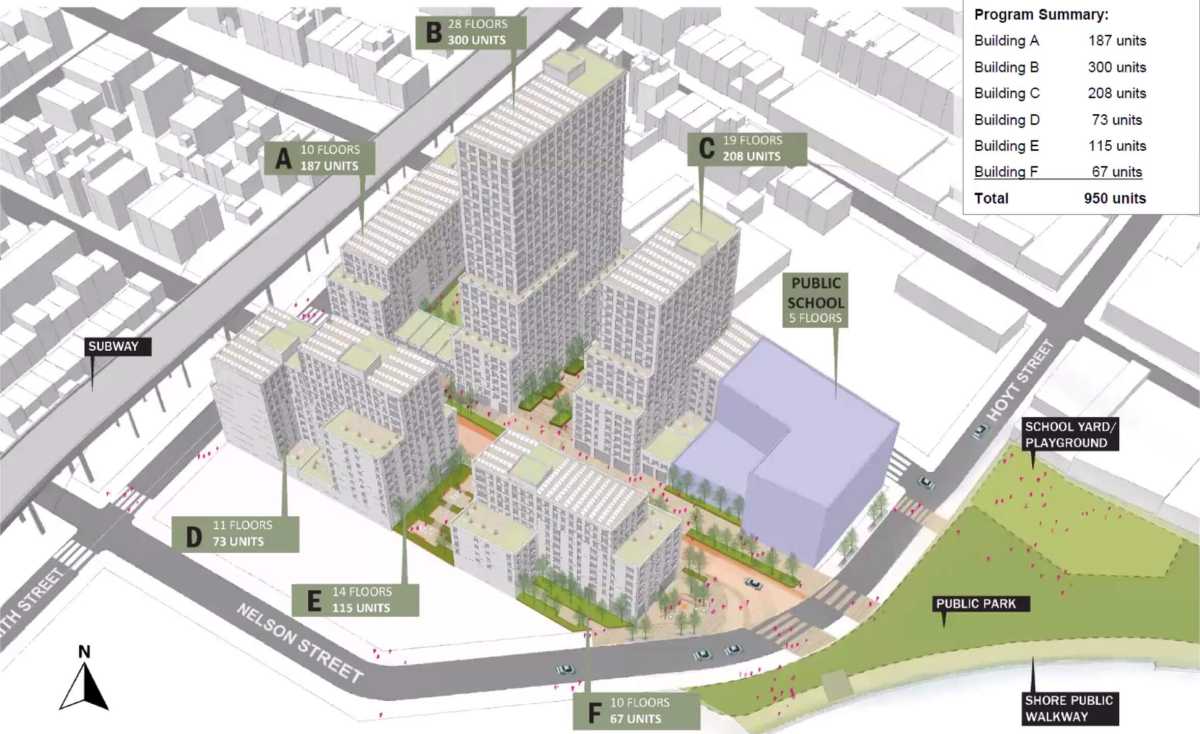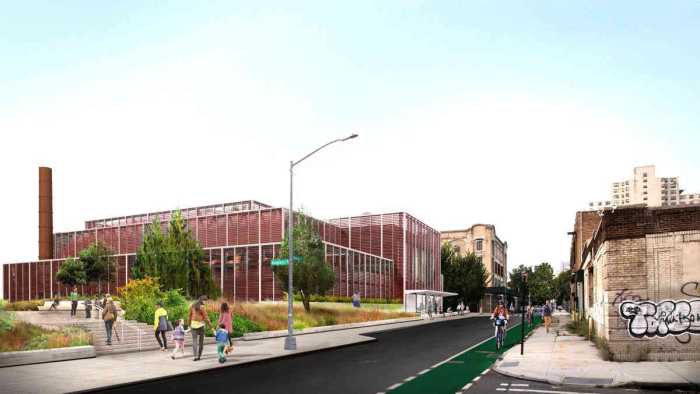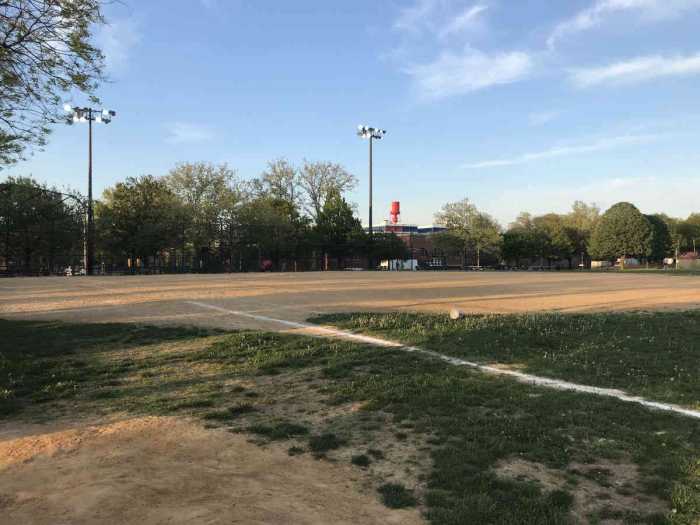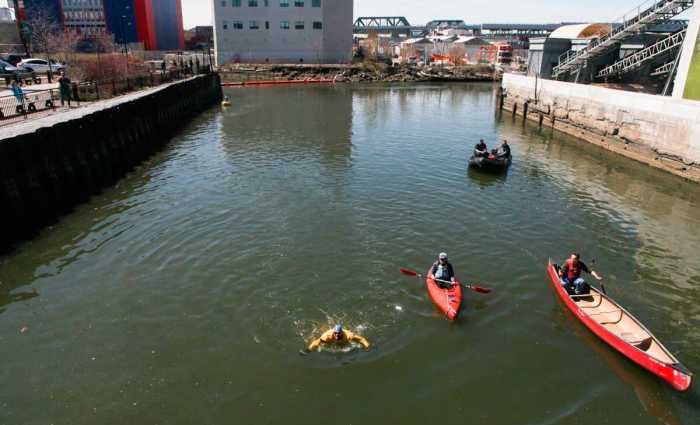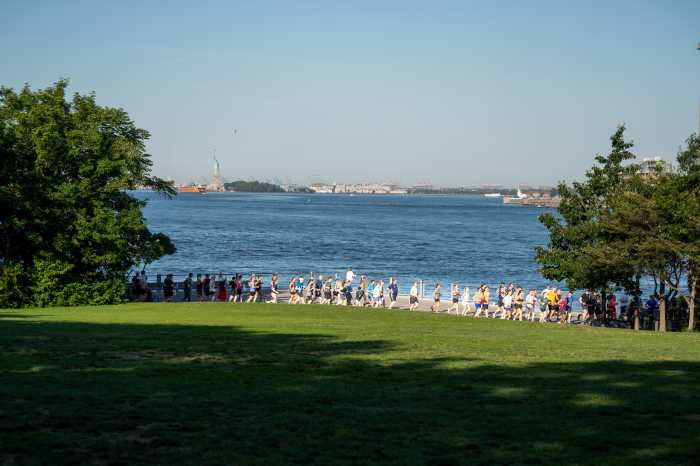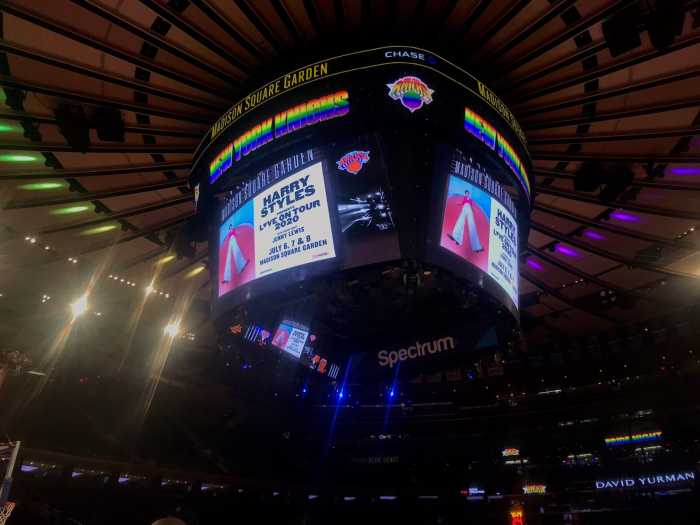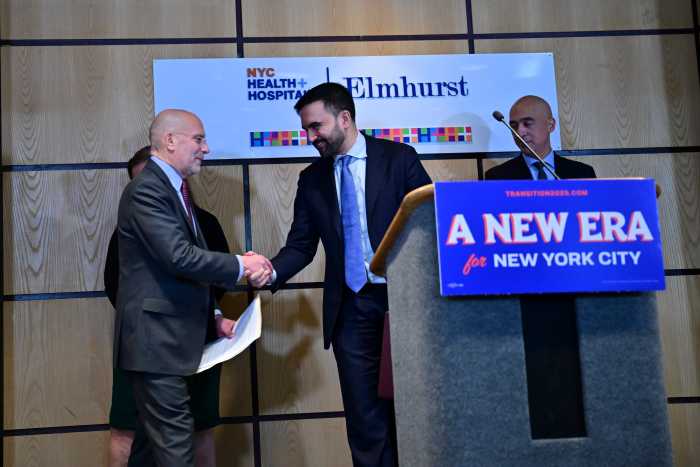Uncle Sam and the Empire State are starting with a clean slate.
Federal and state environmental officials will join forces to promise that a planned affordable housing complex along the putrid Gowanus Canal will be safe — which comes after an Environmental Protection Agency guru raised alarming concerns over the site’s toxic soil.
“As part of EPA’s assessment of the Public Place remediation effort, EPA and [New York State Department of Environmental Conservation] have agreed to work cooperatively with all parties involved to ensure that the remediation will be protective of public health and the environment, and that the basis for the remedy is clearly communicated to the public,” reads a March 22 letter by both agencies.
The joint statement came after a behind-the-scenes rift between the two agencies, because EPA’s Superfund Cleanup project manager for the Gowanus Canal Christos Tsiamis publicly voiced concerns in December about the housing project slated for Smith and Fifth streets — dubbed Gowanus Green — due to the land’s century’s-worth of pollution from once housing manufactured gas plant, or MGP.
The proposal includes 950 below-market-rate housing units, a waterfront park, and space for a future public school — and, when completed, the project will be the largest cluster of affordable apartments promised as part of the Gowanus neighborhood rezoning.
The development of 100 percent below-market-rate housing units will be jointly developed by the Fifth Avenue Committee, the Bluestone Organization, the Hudson Companies, and the Jonathan Rose Companies.
National Grid is currently working on a state-supervised Brownfield Cleanup of Public Place, and Tsiamis gave his now-infamous analysis of that work and the site’s future safety late last year upon request by the Gowanus Canal Community Advisory Group, a local watchdog group of the waterway’s federal scrub.
The veteran engineer got into hot water with the state’s DEC, whose local cleanup director Michael Ryan fired off a missive to Tsiamis’s boss saying he had spread “misinformation” and made “flippant, unsubstantiated statements,” unnecessarily drumming up fears.
Tsiamis returned to the CAG after a three-month absence from their monthly meetings on March 23, saying he believed a cleanup of Public Place could be done, citing similar efforts in Manhattan, but he added that his assessment of the site’s challenges remained unchanged.
“It is in the interest of all the parties involved — EPA, the state, the city, and the developers — to ensure that all that needs to be done at that site will be done so that the developed site will be safe for the public,” Tsiamis said at the Tuesday virtual gathering. “I have not seen any new data or documents since I have last spoken to you and I have nothing to add to that assessment that I provided at the CAG previously.”
The engineer compared Public Place to the state-supervised cleanups with Con Edison of two properties slated for residential development atop the former West 18th Street Gas Works site in Manhattan, where gas was manufactured from 1833-1900 and gas holders remained operational until 1914.
The company extracted coal tar or excavated the polluted soil at the Big Apple site and in one case stabilized the ground with cement, similarly to EPA’s current method of cleaning up the Gowanus Canal bed.
“[These sites] have been developed and in a manner that it is protective of the future development, of the users of the future development, so it’s not anything new,” Tsiamis said. “These are finished sites and they seemed to have done the right thing.”
He previously claimed coal tar extraction tanks would be necessary beneath Gowanus Green’s planned park along the canal where the slimey substance, nicknamed “black mayo” by locals, accumulates. He said the sludge would have to be sucked out of those reservoirs regularly for years to come — which, unless sealed off, would be a smelly and messy affair for residents, pupils, and park-goers.
Nation Grid is currently excavating and filling in clean soil at depths between 2- and 22-feet as part of its two-year project to contain the contamination, which officials have found at depths of 150 feet at Public Place.
Gowanus Green developers have also applied with the state’s cleanup program in case they need to further cleanse the site before construction, which could include scooping out more gunk, installing a cap, and systems to stop toxic vapors from seeping up into the buildings.
The details of the potential further remediation had previously been little more than a footnote at city presentations for the project in November, but the Gowanus Green team, through a spokesman, said they plan to file a “work plan” for the site soon.
“We are working closely with the relevant agencies to complete our work plan to further investigate the site, which will address additional contaminated source materials, the capping of the site, and vapor mitigation. We expect to finalize and submit our work plan in the coming days,” said James Yolles in a prepared statement.
Editor’s note (Thursday March 25, 1:50 pm): This story previously misstated that Christos Tsiamis compared Public Place to the Con Edison cleanup at Stuyvesant Town. Tsiamis was in fact referring to a different remediation by Con Ed at the West Side of Manhattan. Brooklyn Paper regrets the error.


